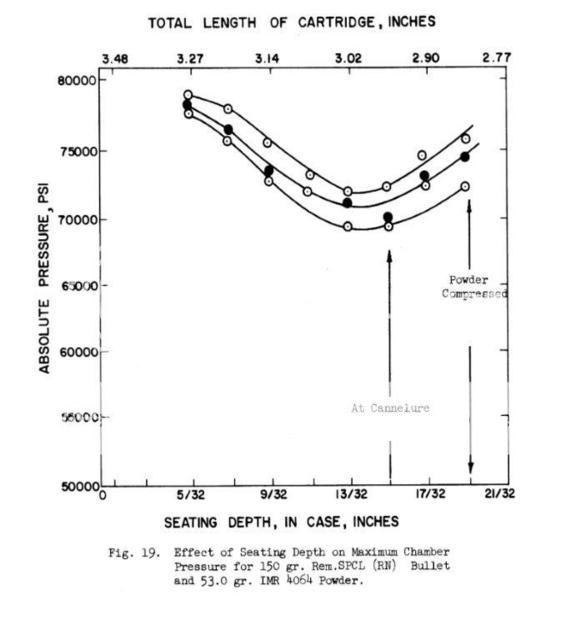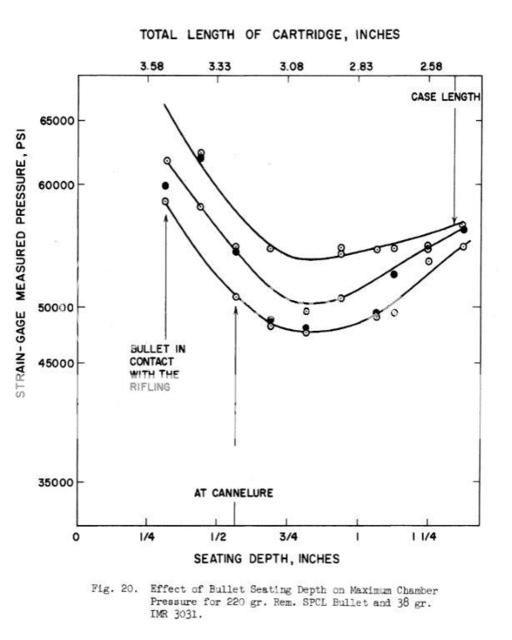Mikecr
Well-Known Member
I agree with phorwath, and that graph supports his contention if nothing else.
The little 10fps 'average' variances about a 20thou change in seating depth -is insignificant.
It is of possible for seating depth changes to affect MV enough to miss-shape grouping or even to throw us out of a powder node. This could be a fully filled case of very fast powder(6PPC, 30BR, etc.), or donut issues mentioned.
So in that sense it's hard to lay down a universal rule. But it's not hard to counter common misconceptions about normal deeper seating adjustments causing pressure 'problems'.
The little 10fps 'average' variances about a 20thou change in seating depth -is insignificant.
It is of possible for seating depth changes to affect MV enough to miss-shape grouping or even to throw us out of a powder node. This could be a fully filled case of very fast powder(6PPC, 30BR, etc.), or donut issues mentioned.
So in that sense it's hard to lay down a universal rule. But it's not hard to counter common misconceptions about normal deeper seating adjustments causing pressure 'problems'.


